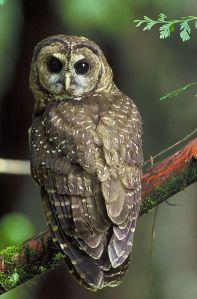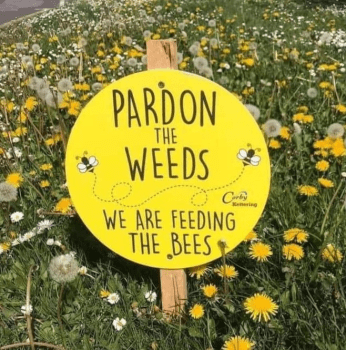
U.S. Fish & Wildlife Service recently announced that after a 25-year effort, they are finally giving up on the fantasy that they can relocate otters from the coast of California to one of the Channel Islands off the coast. From 1987 to 1991, they captured and relocated 140 otters in a futile attempt to create a “no-otter zone.” (1)
Only 40 otters remain near the Channel Islands. Fish & Wildlife claims that most of the otters returned to the coast. We’ll never know how many otters died in the process of relocation and subsequent repatriation. Clearly, even if they survived the pointless ordeal, they didn’t benefit from it.
Otters were nearly hunted to extinction because of their soft fur. Their population plummeted from 16,000 in the late 1700s to only 50 in the 1930s. They were listed by the Endangered Species Act as a threatened species in 1977 and their population has stabilized at about 2,800.
Because of their status as a legally protected species, U.S. Fish & Wildlife decided to move them based on their belief that they would be safer. They claimed to be concerned that the otters might be harmed by off-shore oil drilling. One wonders if their concern might have had more to do with the fishermen who say that otters are depriving them of their catch of abalone and sea urchins.
Fish & Wildlife published a study of their project in 2005, which acknowledged the failure of the effort, yet it took 7 years for them to get around to officially ending it.
Killing one animal to save another
Such attempts to control nature and the animals that live in it are the stock and trade of U.S. Fish & Wildlife as well as their colleagues in state agencies with a similar mission. Here are a couple of local examples.

The spotted owl was given endangered species status over 25 years ago. Logging was substantially reduced in the Pacific Northwest in an effort to save the habitat of the spotted owl, with devastating consequences for the timber-based economy. Despite that effort, the population of spotted owls declined over 40% in the past 25 years.
So, now US Fish & Wildlife has selected a new scapegoat for the decline of the spotted owl population. They have decided that another owl, the barred owl, is the culprit. The barred owl is larger and its range is apparently expanding. So, in its infinite wisdom, Fish & Wildlife recently announced that it will begin shooting barred owls where they don’t “belong” based on their assumption that the spotted owl will benefit from the removal of its competitor. (2)
Carpet bombing with rodenticides
As crazy as the plan to shoot barred owls is, here’s a plan that strikes us even worse. In April 2011, U.S. Fish & Wildlife announced its intention to evaluate a plan to aerial bomb the Farallon Islands off the coast of San Francisco with rodenticides to kill resident mice. (3)

Here’s their logic for this strategy: the mice are eaten by burrowing owls which don’t “belong” on the Farallones, in their opinion. They claim that they don’t want to kill the burrowing owls because they acknowledge that they are just as rare in their historic range as the birds they claim will be saved by this bizarre plan. They claim that when the burrowing owls eat all the mice, they start eating the eggs of the ashy storm petrel which is an equally rare bird, but it “belongs” on the Farallones, so its perceived needs trump those of the equally rare burrowing owl. They believe that if the mice are killed, the burrowing owls will return to where Fish & Wildlife believes they belong.
There is so much wrong with this plan that it’s difficult to know where to start. The Farallones are an important bird sanctuary, home to many species of birds many of which are rare. Can Fish & Wildlife guarantee that the burrowing owl is the only species of bird that will eat the poisoned mice? How many burrowing owls will die from eating the poisoned mice? If they don’t die, won’t they eat even more eggs of the storm petrel? Will the death of the mice deprive other species of birds of their food? As the rodenticide washes off the islands into the ocean, will it kill the marine life around the island? Will it enter the food web of the entire island, killing unintended targets such as the birds that eat fish?
As crazy as this plan sounds, it is not a new strategy for Fish & Wildlife. In 2008, 46 tons of rodenticides were dumped on an island in the Aleutian chain off the coast of Alaska. That carpet bombing is known to have killed a total of 420 birds, including 40 bald eagles. (4)
The outcry about the birds being killed by rodenticides has been getting louder recently. The San Francisco Chronicle reports that a coalition of wildlife and public health advocates has asked California’s regulator of pesticides to take rosenticides off the market. We hope these pleas for sanity will be heeded before the Farallones are bombed with rodenticides.
Nature is on the move
Just as humans have moved around the Earth in search of more hospitable conditions—more food, better climate, less competition—animals have done the same. Now humans have decided that the animals must stay put. Wherever they existed in the historic past is where they “belong.” When animals move, man has decided they are “invasive” and they must be stopped.
Man’s war on invasive species is accelerating because as the climate changes there is greater pressure on animals to move to find the food and habitat they need and on plants to find suitable growing conditions. Humans are apparently unwilling or unable to do anything to stop climate change, yet they are willing and able to try to prevent plants and animals from adjusting to climate change.
As senseless as it seems to deprive plants and animals of their survival mechanisms, this harmful approach has been immortalized in U.S. law by the Endangered Species Act. The ESA is about 40 years old and was enacted at a time when the consequences of climate change were largely unknown. It defines endangered species as any plant or animal that becomes rare within its historic range. So, for example, if an animal or plant moves in response to climate change, it is often designated as an endangered species even though it may be plentiful in its new home to which it is better adapted. And Fish & Wildlife comes to its “rescue” by trying to force it to return to its historic range to which it is no longer adapted.
As we pondered this conundrum, we were reminded of a television commercial in 1970. Mother Nature is telling stories to her animal friends in the forest, when someone hands her a tub of margarine to taste. She smiles sweetly and congratulates herself on how delicious butter is. She is informed that it isn’t butter, but rather an artificial substitute. She rises from her throne, raises her voice to scold, shoots lightning from her fingers and warns us, “It’s not nice to fool Mother Nature.” (see this charming video here).
Will nature punish humans for their refusal to allow it to change as needed to survive? No, not literally, of course, but perhaps we will suffer the unintended consequences of our arrogant attempts to control natural processes we do not understand.
****************************
(1) Peter Fimrite, “Feds scrap ‘dumb idea’ of relocating otters,” San Francisco Chronicle, December 18, 2012
(2) Associated Press, “U.S. plans to kill Barred owls to save spotted owls,” San Francisco Chronicle, February 29, 2012
(3) Kelly Zito, “Pesticide bombing of Farallones mice stirs debate,” San Francisco Chronicle, May 12, 2011
(4) Peter Fimrite, “Concern over fallout of bombing mice,” San Francisco Chronicle, October 17, 2011
